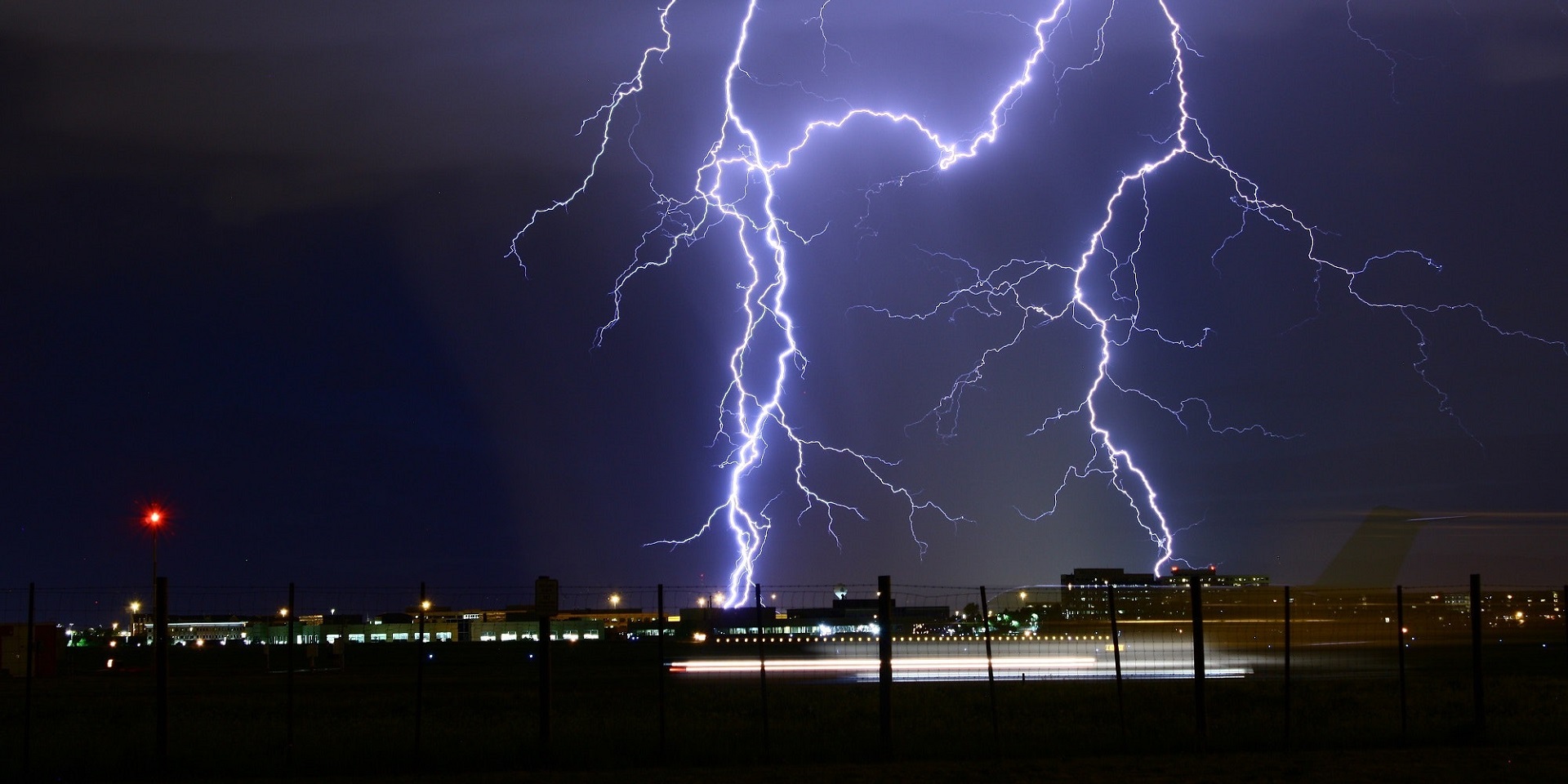Rumbling Skies and Electrifying Moments: Exploring the Power and Beauty of Thunderstorms
7 min read
Feel the electricity in the air, hear the distant rumble of thunder, and witness nature’s power on full display. Thunderstorms are a remarkable spectacle that captivates our senses and leaves us in awe of Mother Nature’s might. From dark clouds rolling into dazzling lightning strikes, there is something truly exhilarating about being caught up in the midst of a thunderstorm. In this blog post, we will delve into the inner workings of these atmospheric phenomena, explore their beauty and risks, discover intriguing moments from history when storms made their mark, and ultimately appreciate the sheer magnificence of thunderstorms. So buckle up and get ready to embark on an electrifying journey through rumbling skies!
What is a thunderstorm?
A thunderstorm is an atmospheric phenomenon that occurs when warm, moist air rises rapidly into cooler regions of the atmosphere. As this moist air ascends, it cools and condenses into clouds. These towering clouds, known as cumulonimbus clouds, are a telltale sign that a thunderstorm is brewing.
Within these towering giants, a complex interplay of electrical charges takes place. The collision between ice particles and water droplets within the cloud creates an electric charge separation – positive charges gather near the top of the cloud while negative charges accumulate at the bottom. This sets the stage for one of nature’s most spectacular displays: lightning.
When these opposite charges become too great to be contained within the cloud, they seek to equalize by creating a path through which electricity can flow. We witness this as lightning bolts streak across the sky in brilliant flashes of light.
Accompanying these awe-inspiring bursts are deafening claps of thunder. Thunder is actually created by lightning superheating and expanding nearby air molecules at incredible speeds – causing shockwaves that we perceive as sound.
While every thunderstorm shares some common characteristics, each one possesses its own unique personality – from gentle summer showers with distant rumbles to intense storms with torrential rain and frequent lightning strikes. So next time you find yourself caught in a downpour accompanied by rumbling skies, take a moment to appreciate the marvels happening above you – it’s nature’s way of reminding us just how powerful and beautiful she can be!
How does a thunderstorm work?
How does a thunderstorm work? It’s a fascinating question that has captivated scientists and weather enthusiasts for centuries. Thunderstorms are complex phenomena that occur when warm, moist air rises rapidly in the atmosphere. As this air ascends, it cools and condenses, forming towering cumulonimbus clouds.
Inside these massive clouds, there is an intricate interplay of electrical charges. The rising air carries water droplets upwards, while ice particles fall towards the ground. This movement creates friction between the different particles, leading to the separation of positive and negative charges.
When these opposite charges become too great to withstand, a discharge occurs – lightning! Lightning bolts can reach temperatures hotter than the surface of the sun and can strike with incredible power. The resulting thunder is caused by the rapid expansion and contraction of air surrounding the lightning bolt.
But thunderstorms aren’t just about lightning and thunder. They also bring heavy rain, strong winds, hailstones, and sometimes even tornadoes. These powerful storms have the potential to cause significant damage to property and pose risks to human safety.
Despite their destructive potential, there is an undeniable beauty in watching a thunderstorm unfold. The darkened skies illuminated by brilliant flashes of lightning create an awe-inspiring spectacle that reminds us of nature’s raw power.
So next time you find yourself caught in a rumbling storm or see one approaching from afar, take a moment to appreciate its majesty while also ensuring your safety by seeking shelter indoors or staying away from open spaces.
Thunderstorms are truly remarkable natural phenomena that remind us of both our vulnerability as humans and nature’s ability to create breathtaking displays of power.
What are the risks of a thunderstorm?
The power and beauty of thunderstorms can be awe-inspiring, but it’s important to recognize that these natural phenomena also come with risks. Thunderstorms have the potential to cause significant damage and pose dangers to both humans and the environment.
One of the main risks associated with thunderstorms is lightning strikes. Lightning is a discharge of electricity that occurs during a storm, and it can be deadly. Each year, hundreds of people are struck by lightning around the world, leading to injuries or even fatalities. It’s crucial to seek shelter indoors during a thunderstorm to minimize the risk of being struck by lightning.
Another risk associated with thunderstorms is strong winds. These powerful gusts can uproot trees, damage buildings, and create flying debris hazards. Tornadoes often form within severe thunderstorms, which further increase wind-related risks.
Flooding is also a common risk during thunderstorms, especially if heavy rain falls in a short period. Flash floods can occur rapidly and overwhelm infrastructure like drainage systems or rivers causing them to overflow their banks.
Additionally, hail poses its own set of risks during a thunderstorm. Hailstones are formed when supercooled water freezes on ice nuclei in storms’ updrafts forming layers around them as they’re carried higher into colder regions creating chunks of ice that fall as hailstones down onto whatever lies below – including people!
It’s essential always to stay informed about weather conditions by monitoring local forecasts or using weather apps for updates on approaching storms.
While there are certainly risks involved when dealing with thunderstorms, it doesn’t mean we should fear them entirely! Understanding these dangers allows us not only to appreciate their power but also take necessary precautions when facing nature’s fury
The beauty of thunderstorms
The Beauty of Thunderstorms
Thunderstorms are not just powerful displays of nature, they also possess an undeniable beauty that captivates our senses. As dark clouds gather and the air becomes heavy with anticipation, there is a certain thrill in witnessing the raw energy of a thunderstorm.
One of the most awe-inspiring aspects of thunderstorms is the mesmerizing display of lightning. Bolts streak across the sky, illuminating the darkness with their electric brilliance. The crackling sound that accompanies each flash adds to the sensory experience, creating an electrifying moment that sends chills down your spine.
But it’s not just about the lightning; thunderstorms offer a symphony for our ears as well. The deep rumble of thunder reverberates through the atmosphere, creating an atmospheric soundtrack like no other. Each peal carries its own unique cadence and rhythm, adding depth to this natural concert.
And let’s not forget about rain – one of nature’s purest forms of refreshment. During a thunderstorm, raindrops cascade from above like liquid diamonds, quenching parched earth and nourishing life below. There is something peaceful yet invigorating about standing outside amidst pouring raindrops while being surrounded by flashes of light and rolls of thunder.
In addition to their visual and auditory allure, thunderstorms also bring another kind beauty: they remind us how small we are in comparison to Mother Nature’s immense power. These storms serve as humbling reminders that despite all our advances in technology and civilization, we are still at nature’s mercy.
So next time you find yourself caught in a storm or watching from within sheltered walls, take a moment to appreciate both its power and stunning beauty – embrace these electrifying moments offered by mother nature herself!
Storms in history
Storms in history have left an indelible mark on our collective memory. From ancient civilizations to modern times, thunderstorms have captivated and sometimes terrified people across the globe. In fact, many cultures throughout history saw storms as a manifestation of powerful gods or spirits.
One notable example is Norse mythology, where Thor, the god of thunder, wielded his mighty hammer to create thunder and lightning during storms. The Greeks also had their own deity associated with storms – Zeus. According to Greek mythology, Zeus would throw his lightning bolts from Mount Olympus to unleash his fury upon mortals.
In more recent history, severe thunderstorms have played a significant role in shaping events. One such instance occurred during World War II when lightning strikes caused fires that destroyed valuable aircraft and equipment.
Furthermore, some historical figures found inspiration in these tumultuous displays of nature’s power. The famous painter Vincent van Gogh was known for his vivid depictions of stormy skies in paintings like “The Starry Night,” capturing both the beauty and chaos of a thunderstorm.
Storms in history serve as reminders of our vulnerability before the mightiness of nature. They provide glimpses into our past beliefs and leave lasting impressions on art and literature alike. By studying these historical encounters with thunderstorms, we gain a deeper appreciation for their power and beauty that continues to awe us today
Conclusion
Conclusion
Thunderstorms are awe-inspiring displays of nature’s power and beauty. These electrifying moments captivate our senses and leave us in awe of the immense forces at play in the atmosphere.
From the rumbling thunder to the dazzling lightning, a thunderstorm is a symphony of natural elements that brings both fear and fascination. Understanding how these storms work can help us appreciate their magnificence even more.
However, it’s important to remember that while thunderstorms can be mesmerizing, they also pose risks. From torrential downpours and strong winds to hail and tornadoes, these powerful storms can cause significant damage and put lives at risk. It’s crucial to stay informed about severe weather conditions and take necessary precautions when thunderstorms are approaching.
Despite their potential dangers, there is no denying the sheer beauty of thunderstorms. The dramatic skies filled with dark clouds illuminated by flashes of lightning create breathtaking scenes that photographers yearn to capture.
Throughout history, humans have been both fascinated by and fearful of thunderstorms. They have inspired works of art, literature, music, and even legends passed down through generations. Thunderstorms hold a special place in our collective consciousness as reminders of nature’s raw power.
So next time you find yourself witnessing a raging storm overhead, take a moment to marvel at its grandeur but also respect its might. Appreciate the beauty from a safe distance while acknowledging the risks involved.
In conclusion (without using those words), let us embrace these electrifying moments as an opportunity to connect with nature on a deeper level – feeling humbled by its strength yet grateful for its stunning display. May we always be reminded that amidst all this power lies profound beauty worth cherishing for years to come?






